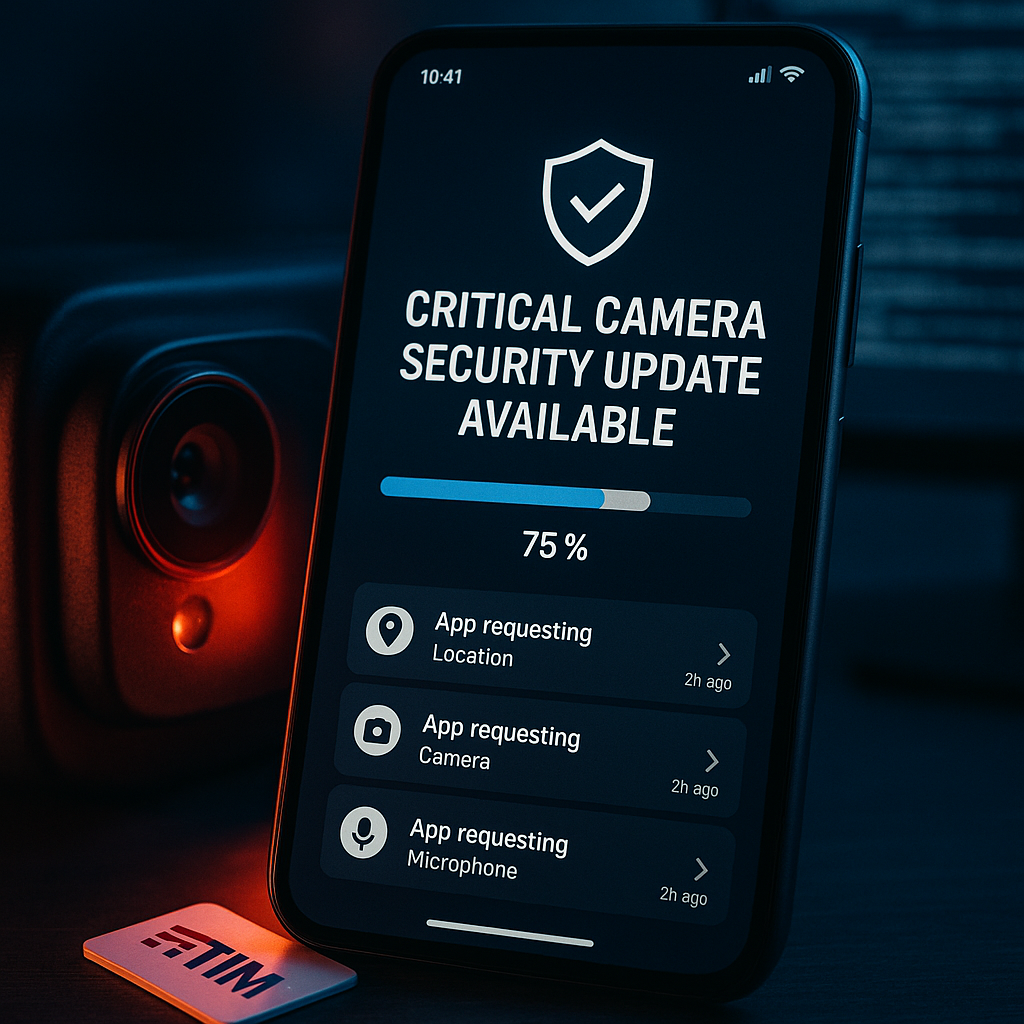Key Takeaways
- Malware threats continue to appear in Google Play Store apps, even with Google’s security protocols. Malicious apps can expose your device and personal data if downloaded carelessly.
- Vigilance is more important than convenience: Verify developer credentials, review user feedback, and check install counts every time you download. Even popular apps can harbor risks.
- Permissions should always set off your alarms: If an app asks for excessive access—to contacts, location, SMS, or other private data—pause and question its intentions.
- Stay up to date for better protection: Updating your apps and OS ensures the latest security patches defend against new threats.
- Google Play Protect is your built-in defense: Make sure it’s switched on, so it can regularly scan and neutralize malicious apps.
- Uninstall suspicious apps quickly: If you notice battery drain, annoying pop-ups, or strange data spikes, remove the app to limit risk.
- Understand that free isn’t always safe: Many “free” apps use aggressive adware or hide malware. Check how apps make money before installing.
By making these safety tips a habit, you can confidently explore the Play Store without falling prey to hidden threats. Next, we’ll break down actionable strategies and highlight the latest Google Play malware warnings to keep your digital life secure.
Introduction
Downloading apps from the Google Play Store may seem routine, but threats can still lurk in plain sight. Despite Google’s ongoing security updates, clever cybercriminals create apps that evade safeguards—risking your privacy, data, and device health.
Understanding recent malware warnings and building safer habits is your best defense. This guide will teach you how to spot suspicious apps, guard your sensitive details, and get the most out of Google Play—without the risks.
The Evolving Threat Landscape: Recent Malware Alerts on Google Play Store Apps
Attackers are using more advanced tactics to slip past Google Play’s defenses. In 2023 alone, researchers found over 300,000+ malicious apps trying to infiltrate the platform—many downloaded thousands, even millions of times.
Un passo avanti. Sempre.
Unisciti al nostro canale Telegram per ricevere
aggiornamenti mirati, notizie selezionate e contenuti che fanno davvero la differenza.
Zero distrazioni, solo ciò che conta.
 Entra nel Canale
Entra nel Canale
Notable Recent Malware Incidents
The “SpyLoan” campaign, late in 2023, breached over 300 “legit” finance and loan apps. These apps covertly harvested personal data and device location, affecting around 12 million users worldwide.
“Xamalicious” was another major threat, hiding in 25+ “utility” apps: boosters, cleaners, and battery savers, among others. After passing initial reviews with real features, the apps pushed malicious code through stealth updates.
These risks aren’t limited to finance or utilities. Similar malware has appeared in:
- Health tracking apps (stealing medical/location data)
- Educational tools (embedding adware/trackers)
- Shopping apps (targeting payment info or injecting fake ads)
Types of Malware and Their Impact
Malware on Google Play usually falls into these categories:
- Banking Trojans: Overlay fake banking login screens to steal credentials.
- Premium SMS Scams: Secretly enroll users in expensive text services.
- Cryptojackers: Hijack your device to mine cryptocurrency, draining battery and performance.
- Adware: Floods your screen with unwanted ads for profit.
- Spyware: Infiltrates apps to steal sensitive data, including health info.
Impacts can range from annoying ad overload to serious financial and privacy risks.
Evasion Tactics Used by Malicious Developers
Modern malware uses sneaky techniques:
- Delayed Activation: Malicious code comes to life days after install.
- Dynamic Payloads: Extra harmful components are downloaded later.
- Permission Disguise: Apps ask for “legit” permissions to hide their intent.
- Code Obfuscation: Deceptive methods blend malicious code with real app features.
Because threats keep evolving, constant vigilance and updated defenses are essential.
Recognizing and Avoiding Malicious Apps: Vigilant Downloading Habits
Safe app browsing starts before you hit download. A few minutes of checking can save months of trouble.
Developer Credential Verification
Begin with the developer:
- Check the developer’s website and support email—look for professionalism and consistency.
- Read the privacy policy, and check branding across other apps.
- See if the developer is on LinkedIn, GitHub, or known in app dev communities.
- Search for independent reviews or coverage of their apps.
Critical App Assessment Metrics
Look for these signs that an app is trustworthy:
- Download numbers: Very low installs in a popular category can be a warning.
- Review patterns: Are there tons of generic, repeated reviews? Genuine feedback is usually balanced/detailed.
- Update frequency: Reputable apps get regular updates and bug fixes.
Permission Analysis
Don’t ignore the permissions screen:
- Check if permissions truly fit the app’s purpose.
- Be wary of apps asking for calls, texts, device admin, or accessibility if they don’t need them.
- Read the permission explanations and deny or customize access whenever possible.
Proactive Protection: Strengthening Your Device Against Malware
Easy fixes can help, but proactive protection gives you lasting security.
Google Play Protect Optimization
Use Google’s included tools fully:
- Enhanced Scanning
- Go to Play Store settings; turn on “Improve harmful app detection” and real-time scanning.
- Monthly Security Audits
- Review app permissions regularly.
- Check for Play Protect alerts each month.
- Watch for lags, overheating, or reboots as warning signs.
System Security Enhancement
Further protect your device by:
- Keeping apps and OS auto-updated (over Wi-Fi, for security patches).
- Restricting “Install Unknown Apps” permission—give it only when absolutely needed.
- Monitoring battery/data use for unexpected spikes.
What to Do If You Suspect a Malicious App
Even cautious users can be targeted. Quick detection and action limit the damage.
Warning Signs of Infection
Look for:
Un passo avanti. Sempre.
Unisciti al nostro canale Telegram per ricevere
aggiornamenti mirati, notizie selezionate e contenuti che fanno davvero la differenza.
Zero distrazioni, solo ciò che conta.
 Entra nel Canale
Entra nel Canale
- Unexpected battery drain
- Sudden data use spikes
- Pop-up ads or random redirects
- Sluggishness, app crashes, or overheating
Immediate Action Steps
If you notice these:
- Contain the app
- Force stop the app.
- Remove its device admin privilege if needed to uninstall.
- Write down what you saw if you need help later.
- Complete removal
- Use Settings > Apps & notifications to uninstall.
- Clear app cache/data.
- Run a full scan using Play Protect or trusted security apps.
If the threat won’t go away, back up your data and consider a factory reset.
Navigating Free Apps: Understanding Risks and Monetization Tactics
Free apps can have hidden costs. Scrutinizing their business model is smart security.
Evaluating Free App Safety
Look for fair money-makers:
- In-app purchases or features unlocks
- Responsible advertising—doesn’t disrupt core features
- Clear paid options/premium subscriptions
Warning signs:
- Aggressive, constant ads
- Asking for unneeded permissions
- Hidden fees or subscription prompts
Risk Assessment Framework
Before you install, ask:
- Does the way this app makes money fit the category?
- Is there a clear, accessible privacy policy?
- How do they disclose data usage?
- Do reviews complain of hidden charges or intrusive behavior?
Weight these factors to dodge scams and privacy traps.
Building Safer Habits for Enjoying Google Play Store Apps
Good habits keep you and your data safe for the long haul.
Essential Safety Protocols
Make these steps routine:
- Monthly app and permissions checkups
- Never skip system or app updates
- Research before downloading, focusing on recent user reviews and change logs.
- Only grant necessary permissions.
Advanced Protection Tools
Think about:
- Reputable mobile security apps with regular malware scanning.
- Using VPNs for secure wifi or sensitive activities.
- App lock tools—important for sensitive work, health, or financial apps.
Conclusion
Malware threats on Google Play are adapting fast. Cybercriminals use tools like delayed activation, code hiding, and permission abuse—making threats harder to spot and affecting every app type from banking to health.
Proactive, skeptical users have the advantage: Research developers, challenge unexplained permission requests, keep devices updated, and leverage tools like Google Play Protect. These steps are critical for digital safety.
Threats will keep evolving. Stay informed, question everything, and defend your data—making safe, secure app usage a daily habit.
With these strategies, you’re not just protecting your device—you’re gaining peace of mind and unlocking the full enjoyment of your technology.





Leave a Reply